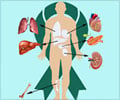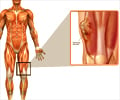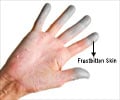Structures that form mammalian tissues have been made in 3-D using embryonic tissue explants, finite element modeling, and 3D cell-patterning techniques.

‘Many tissues fold into complex shapes during development. Controlling this process would represent an important advance for tissue engineering.’





By patterning mechanically active mouse or human cells to thin layers of extracellular matrix fibers, the researchers could create bowls, coils, and ripples out of living tissue. The cells collaborated mechanically through a web of these fibers to fold themselves up in predictable ways, mimicking natural developmental processes."Development is starting to become a canvas for engineering, and by breaking the complexity of development down into simpler engineering principles, scientists are beginning to better understand, and ultimately control, the fundamental biology," says senior author Zev Gartner, part of the Center for Cellular Construction at the University of California, San Francisco. "In this case, the intrinsic ability of mechanically active cells to promote changes in tissue shape is a fantastic chassis for building complex and functional synthetic tissues."
Labs already use 3D printing or micro-molding to create 3D shapes for tissue engineering, but the final product often misses key structural features of tissues that grow according developmental programs. The Gartner lab's approach uses a precision 3D cell-patterning technology called DNA-programmed assembly of cells (DPAC) to set up an initial spatial template of a tissue that then folds itself into complex shapes in ways that replicate how tissues assemble themselves hierarchically during development.
"We're beginning to see that it's possible to break down natural developmental processes into engineering principles that we can then repurpose to build and understand tissues," says first author Alex Hughes, a postdoctoral fellow at UCSF. "It's a totally new angle in tissue engineering."
"It was astonishing to me about how well this idea worked and how simply the cells behave," Gartner says. "This idea showed us that when we reveal robust developmental design principles, what we can do with them from an engineering perspective is only limited by our imagination. Alex was able to make living constructs that shape-shifted in ways that were very close to what our simple models predicted."
Advertisement
Source-Eurekalert









